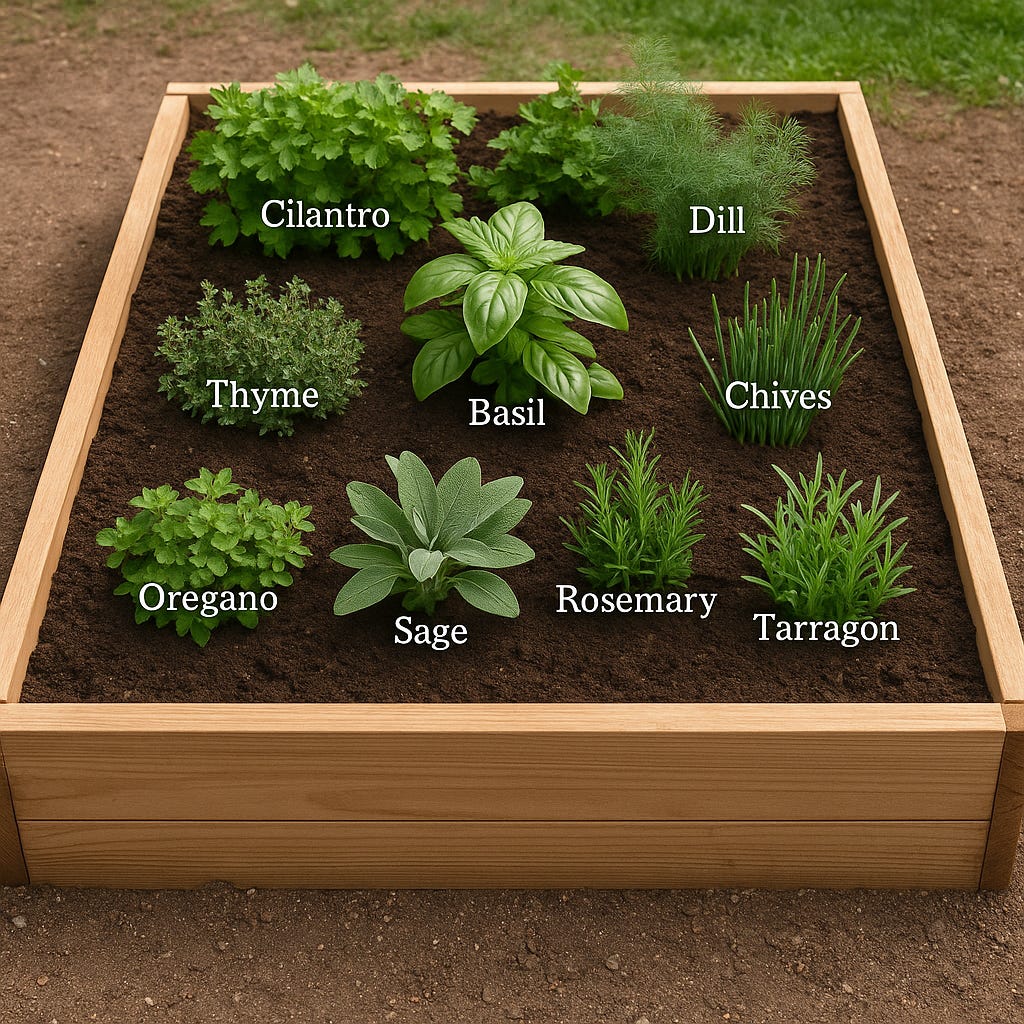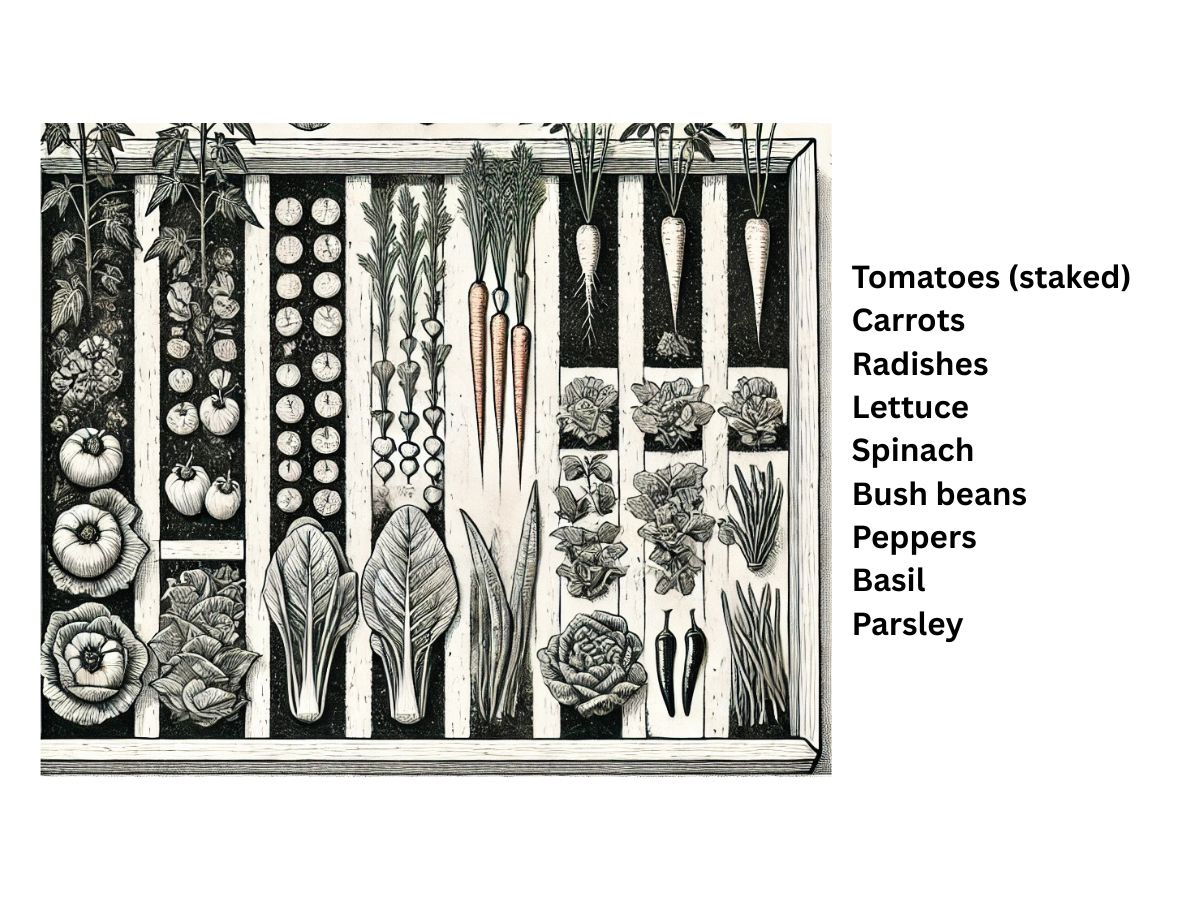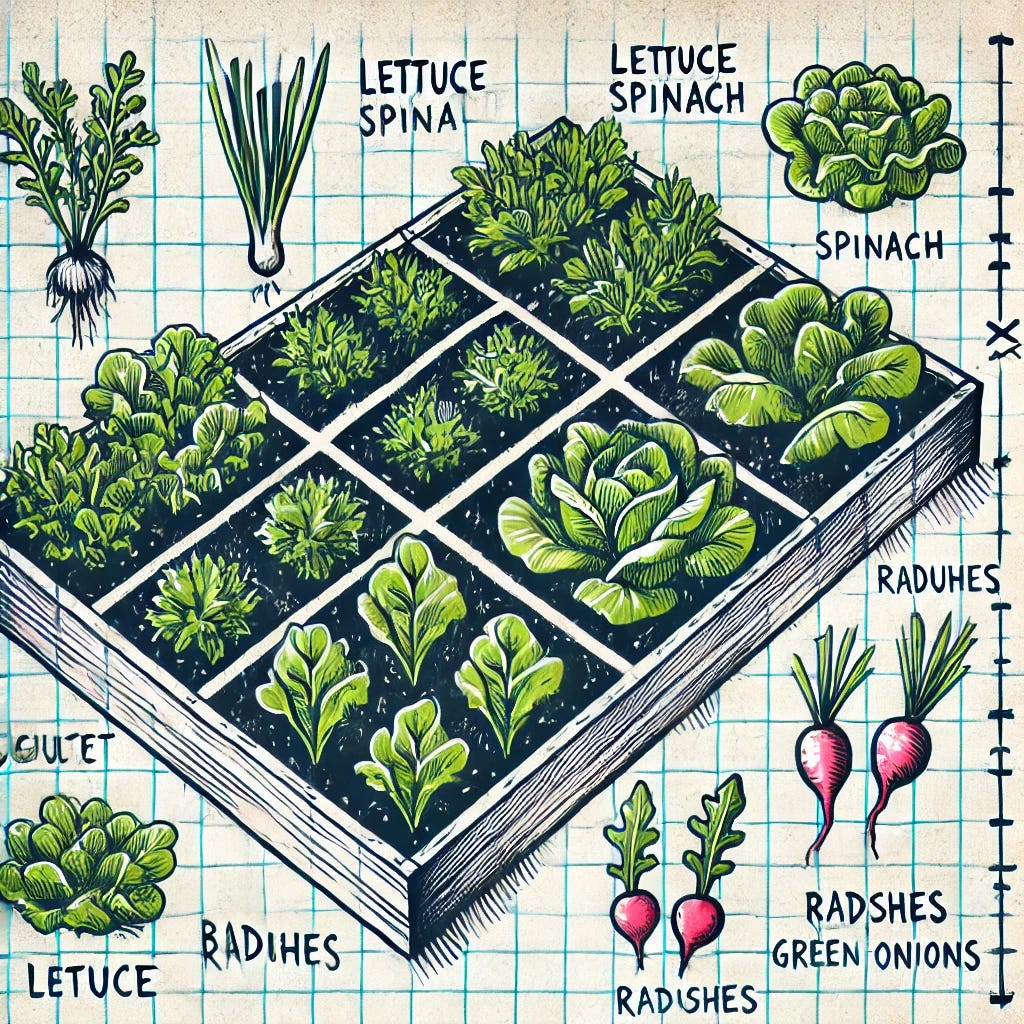Next week I’m sharing a complete guide to building, filling and planting a raised bed. My video will walk you through exactly how I created some raised beds and suggestions on planting it. You will get your own downloadable PDF as well.
This will help you create the perfect raised bed for your next garden. Next week’s video and ebooklet is available just for paid subscribers, along with all my other resources, workshops and courses. I promise you this will save you time and help you build a better harvest.
Not ready to commit - make sure to check out the free ideas below as well! These ideas show how to plant into a raised bed with some specific ideas. Make sure to get my guide to plant spacing in a raised bed.
I used AI to generate these images since I don’t have photos of the beds I’ve created planted perfectly. It was an interested experiment since I don’t usually use this here on this page - it’s comical how it does a great job sometimes and other times is terrible. I’ll continue to share actual images of my new raised beds as the grow this season over on the notes, but for now, enjoy these plans.
Create an Herb Garden Raised Bed
A raised bed is the perfect place for your favorite herbs. Put the bed close to your kitchen or house so you can easily run out and grab some herbs from the garden when you are cooking dinner.
Create a Pizza Garden Raised Bed
One of my favorite garden beds to create is a pizza bed (or an Italian bed). The idea is that you fill this with all the ingredients you use to make pizza. Here is a list of some of the plants you can include:
Vegetables & Fruits
Tomatoes (especially Roma or San Marzano)
Bell Peppers (red, yellow, green)
Hot Peppers (jalapeño, banana, cherry)
Onions (yellow, red, green onions)
Garlic
Shallots
Spinach
Arugula
Zucchini (optional for topping or grilling)
🌿 Herbs
Basil (a must!)
Oregano
Thyme
This image is particularly bad!
6x4 foot Raised Bed
In a general raised bed, you can plan almost everything. I recommend getting out some graph paper and using this to lay out your garden bed. In a raised bed you can adjust the plant spacing - you can use our guide to plan the perfect garden spacing.
Raised Bed Veggie Plan
This plan has a variety of veggies types and can be adapted in many different ways. Mix herbs and veggies (these are often good companion plants).
Raised Salad Bed
I usually keep one of my raised beds as a salad garden. This makes it easy to put together a salad each night - just head to one raised bed. Here’s a possible design. Reminder to only plant what you’ll eat!
The text here is terrible!
Here’s what I like to plan in my raised salad bed:
Lettuce
Spinach
Arugula
Radishes
Green Onions
Top Tips for Planting in a Raised Bed
1. Start with the Right Soil Mix
Use a high-quality mix of compost, topsoil, and aerators like vermiculite or perlite. A common blend is: 60% topsoil, 30% compost, 10% aeration material.
2. Plan Before You Plant
Sketch out your bed layout before planting. Consider spacing, plant height, and how much sun each crop needs. Use your printable Raised Bed Layout Planner!
3. Follow the Sun
Most vegetables need 6–8 hours of full sun. Position tall plants like tomatoes or corn on the north side so they don’t shade shorter ones.
4. Use Companion Planting Wisely
Group plants that benefit each other — like basil with tomatoes or carrots with lettuce — to improve growth and reduce pests.
5. Don’t Overcrowd
It’s tempting to pack everything in, but overcrowding reduces airflow, encourages disease, and limits harvests. Follow spacing guidelines on seed packets.
6. Add Mulch
A layer of mulch (like straw, leaves, or wood chips) retains moisture, keeps soil temps stable, and suppresses weeds.
7. Water Deeply and Consistently
Water at the base of plants and aim for deep, infrequent watering to encourage strong root systems. Morning is best!
8. Rotate Crops Each Season
Avoid planting the same crop in the same spot year after year. Rotating prevents nutrient depletion and pest build-up.
9. Watch for Pests Early
Check under leaves and around stems regularly. Catching issues early makes natural pest control more effective.
10. Keep a Garden Journal
Track what you planted, what worked, and what didn’t — your future self will thank you next season! Get yours in my library.
Become a paid member today and get exclusive access to next week’s comprehensive guide on building, filling, and planting your very own raised bed. In this special video, I'll walk you step-by-step through how I created my raised beds, with plenty of planting tips along the way. Plus, you'll receive a downloadable PDF packed with all the details you need to get started!
This guide is available only to paid subscribers, along with access to my full library of resources, workshops, and courses designed to save you time and help you achieve a bountiful harvest.










Does a raised bed have a bottom to it or is it just four sides placed on dirt?
what do you think about getting hedgehogs and building habitat for them so that they keep slugs and snails at bay, and making habitat for mantises or katydids to keep insect pests in check?